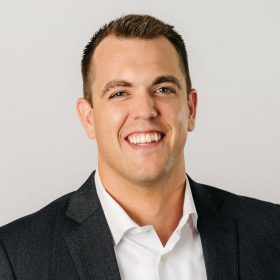The SECURE 2.0 Act was signed into law December 29, 2022, as part of a broader spending bill. This expanded version of the Setting Every Community Up for Retirement Enhancement (SECURE) Act of 2019 makes significant changes to retirement plans—some of which may apply to you.
Below, we answer eight frequently asked questions related to the SECURE 2.0 Act.
I turn 72 this year. Do I need to take a required minimum distribution (RMD) from my IRA?
No. One of the biggest changes under SECURE 2.0 involves pushing back the RMD age. Those born between 1951 and 1959 must now take their RMD at age 73, while those born in 1960 or later do not have to begin RMDs until age 75.
Individuals turning 72 in 2023 can now hold off on taking their first RMD until December 31, 2024. They also have the option of delaying that first RMD until no later than April 1, 2025. Those who delay are still required, however, to take their 2025 distribution, which would mean doubling up RMDs in one tax year.
I’ve already begun taking RMDs. Am I impacted?
No. Individuals who turned 72 on or before December 31, 2022, are not affected by these changes and must continue taking RMDs as scheduled. If you were required to start RMDs in 2022 because you turned 72, you still must take your 2023 RMD. Those who delayed taking last year’s RMD must satisfy that amount by April 1 this year, along with this year’s RMD, before the end of 2023.
I turn 72 this year and already took a withdrawal. Can I re-deposit those funds into my IRA?
Because you qualify to begin taking RMDs when you turn 73 in 2024, any withdrawal made in 2023 is not considered an RMD. You can follow the rules for 60-day rollovers, which allow you once per rolling 12-month period to redeposit a withdrawal (including any withheld taxes) back into the IRA within a 60-day window to avoid having the distribution be subject to taxes.
Has the age to make a Qualified Charitable Distribution (QCD) changed?
No. Individuals can still make QCDs from an IRA starting at age 70 ½ in an amount up to $100,000 per year. That amount will now be indexed to inflation in future years.
Are there any changes to retirement plan contributions?
Yes. Beginning in 2025, employed people ages 60 to 63 can contribute the greater of $10,000, adjusted hereafter for inflation, or 150% of the standard age 50+ catch-up (currently $7,500) to their employer plans. This “super catch-up” provision applies to 401(k), 403(b), and most government 457 plans.
Additionally, starting in 2024, those earning $145,000 or more in wages in the prior year are required to direct any catch-up contributions to an after-tax Roth account.
What changes are in store for employers and business owners?
Starting this year, SIMPLE and SEP IRAs for businesses of any size can now offer tax-free Roth accounts. Additionally, all employer plans can now allow an employer match in the form of a vested Roth contribution (taxable to the employee in the year of the match).
Sole proprietors and/or single-member LLCs also can now establish and fund a Solo 401(k) with deferrals for a previous tax year up to the April tax filing deadline. Previously, this was limited to certain SEP IRA and other employee-funded plans.
Are there other planning opportunities stemming from the SECURE 2.0 Act?
Yes, a potentially significant opportunity relates to remaining 529 college savings plan balances. Starting in 2024, account owners can roll over a lifetime maximum of up to $35,000 in 529 college savings plan balances to a Roth IRA.
Several restrictions apply:
- The Roth IRA receiving the funds must be registered for the same 529 plan beneficiary.
- The 529 plan must have been maintained for 15+ years and any contributions (plus earnings) within the past five years are ineligible to be transferred.
- Rollovers can’t exceed the annual contribution limit and must consider other Roth IRA contributions made by the beneficiary.
Have the rules for inherited IRAs changed?
No. The rules governing the calculation and timing of amounts required to be withdrawn from inherited IRAs remain the same.
Please contact your Vista team with any questions specific to your situation. We’re here to help!
